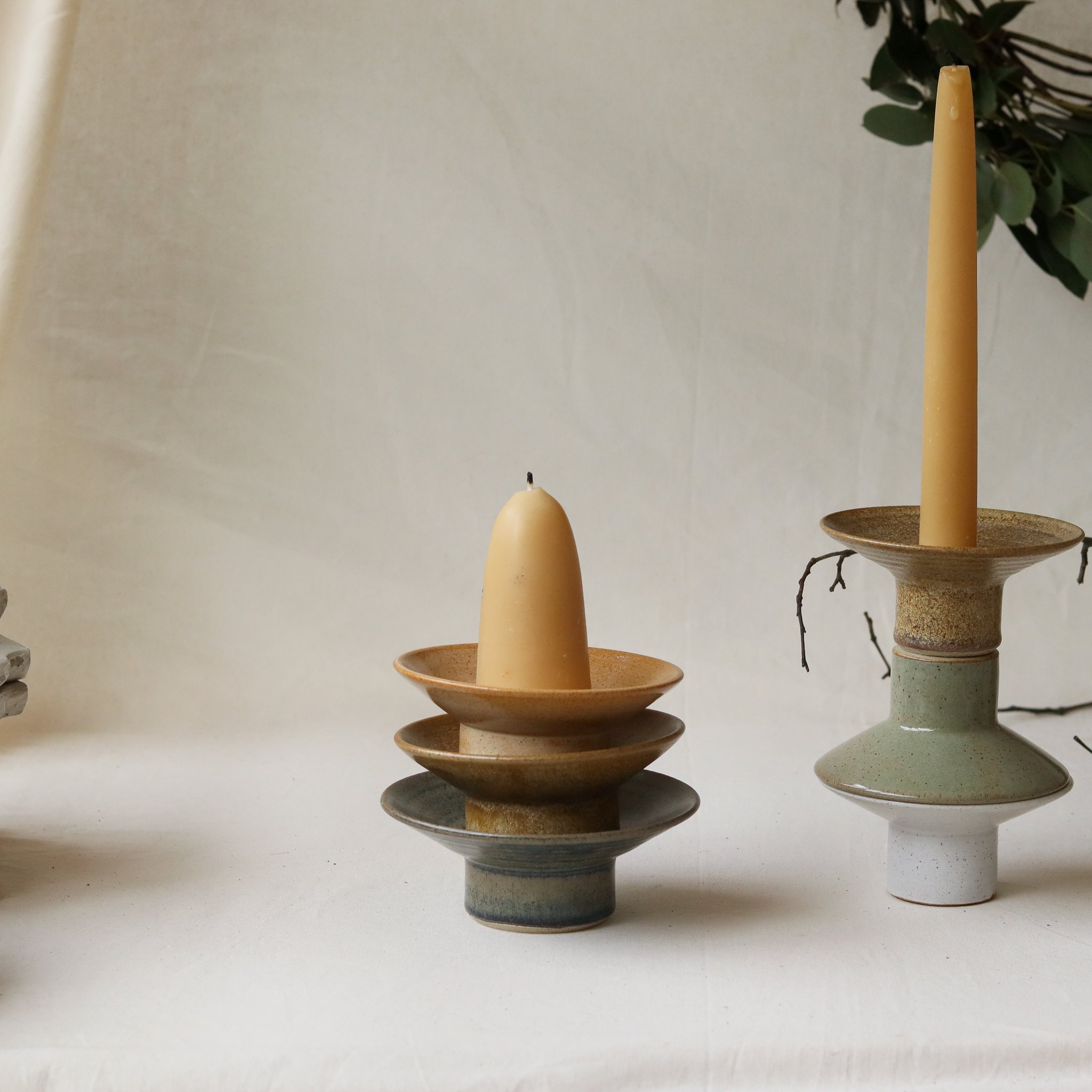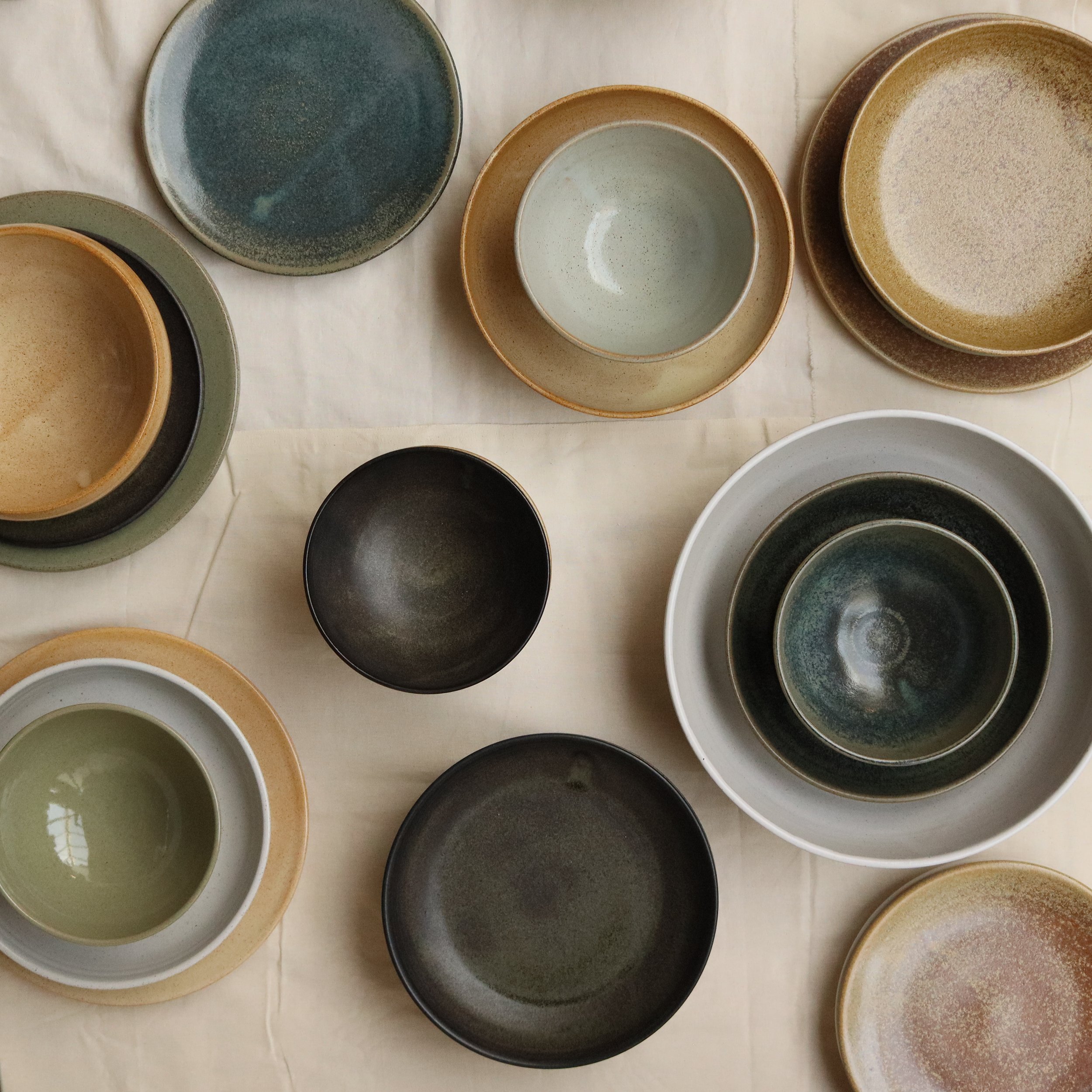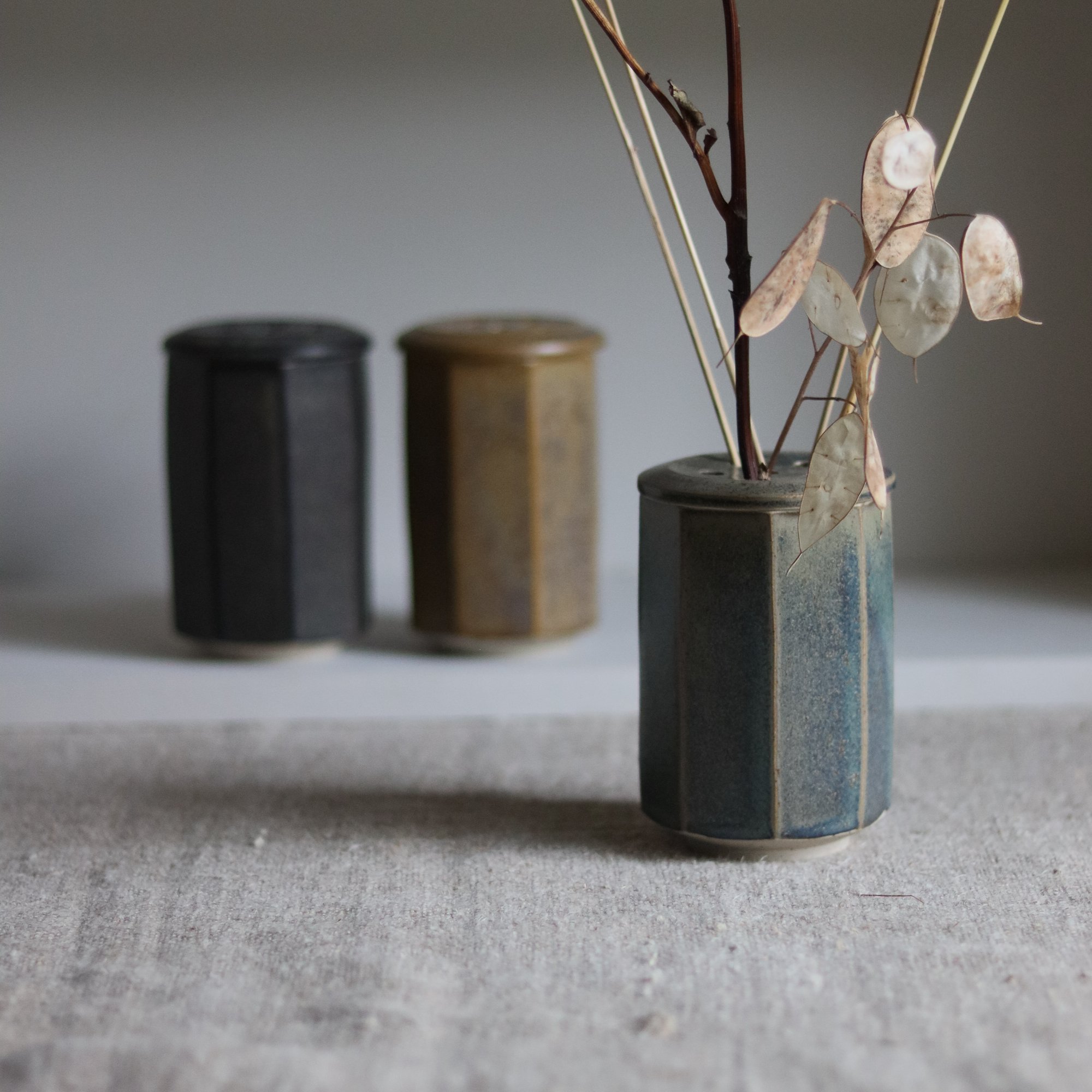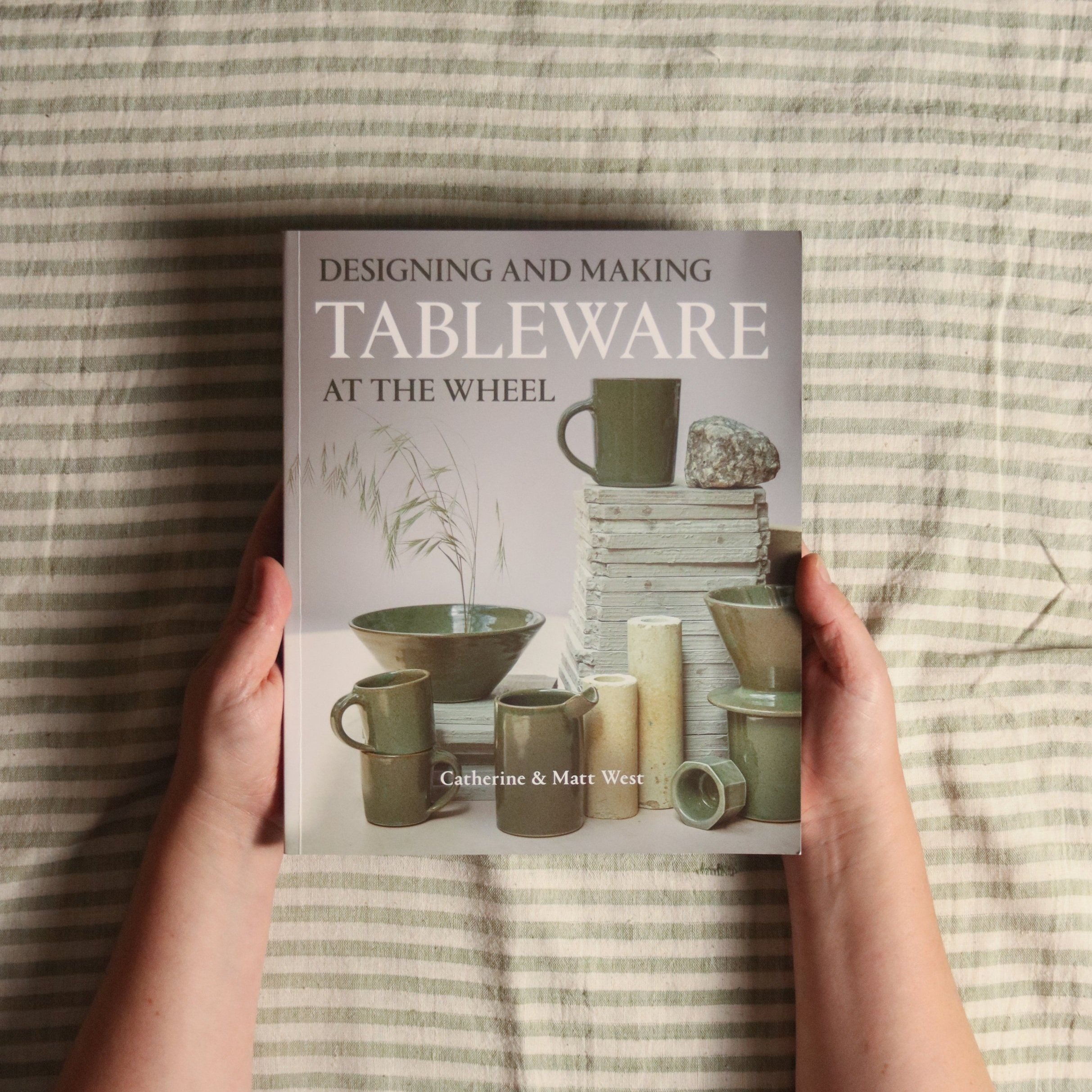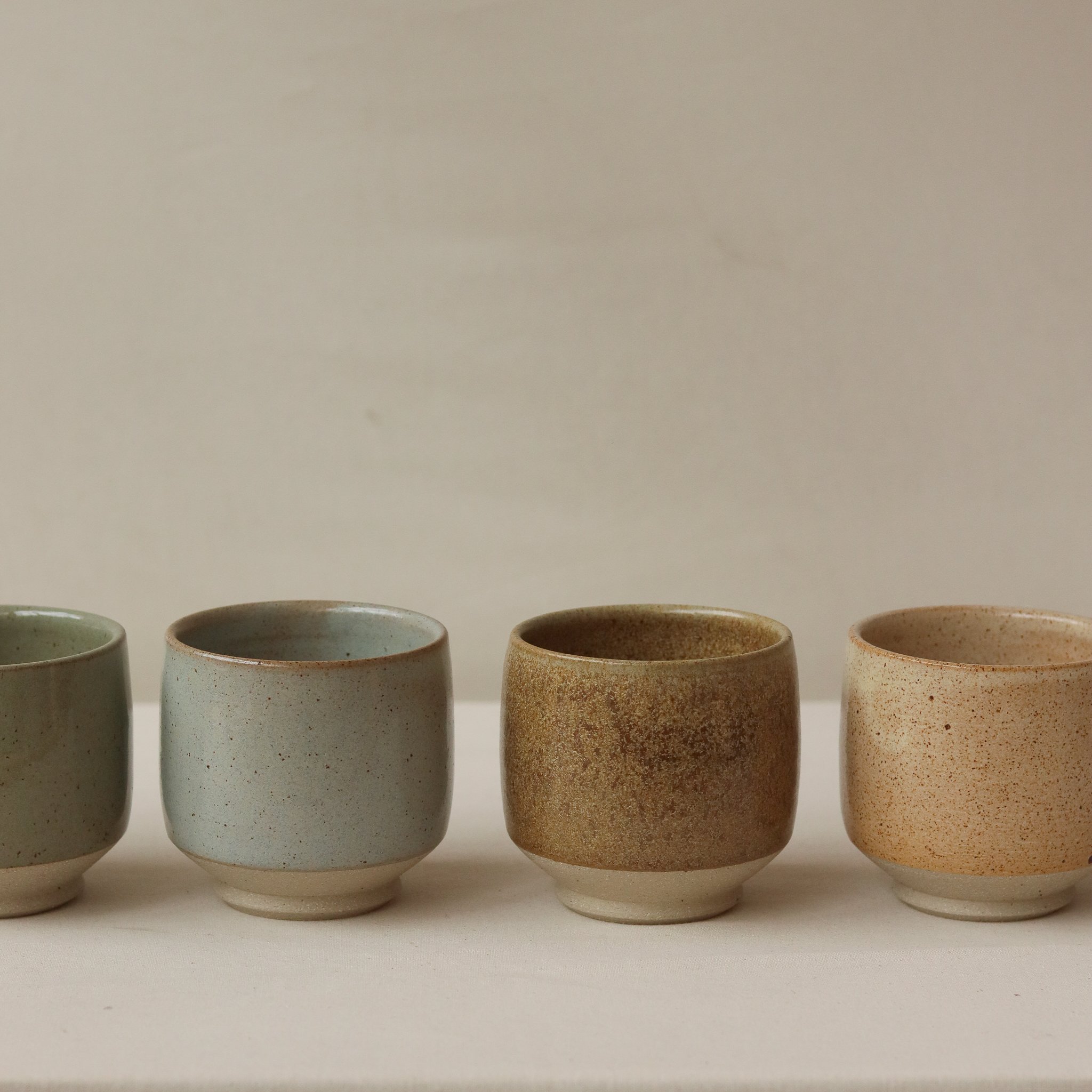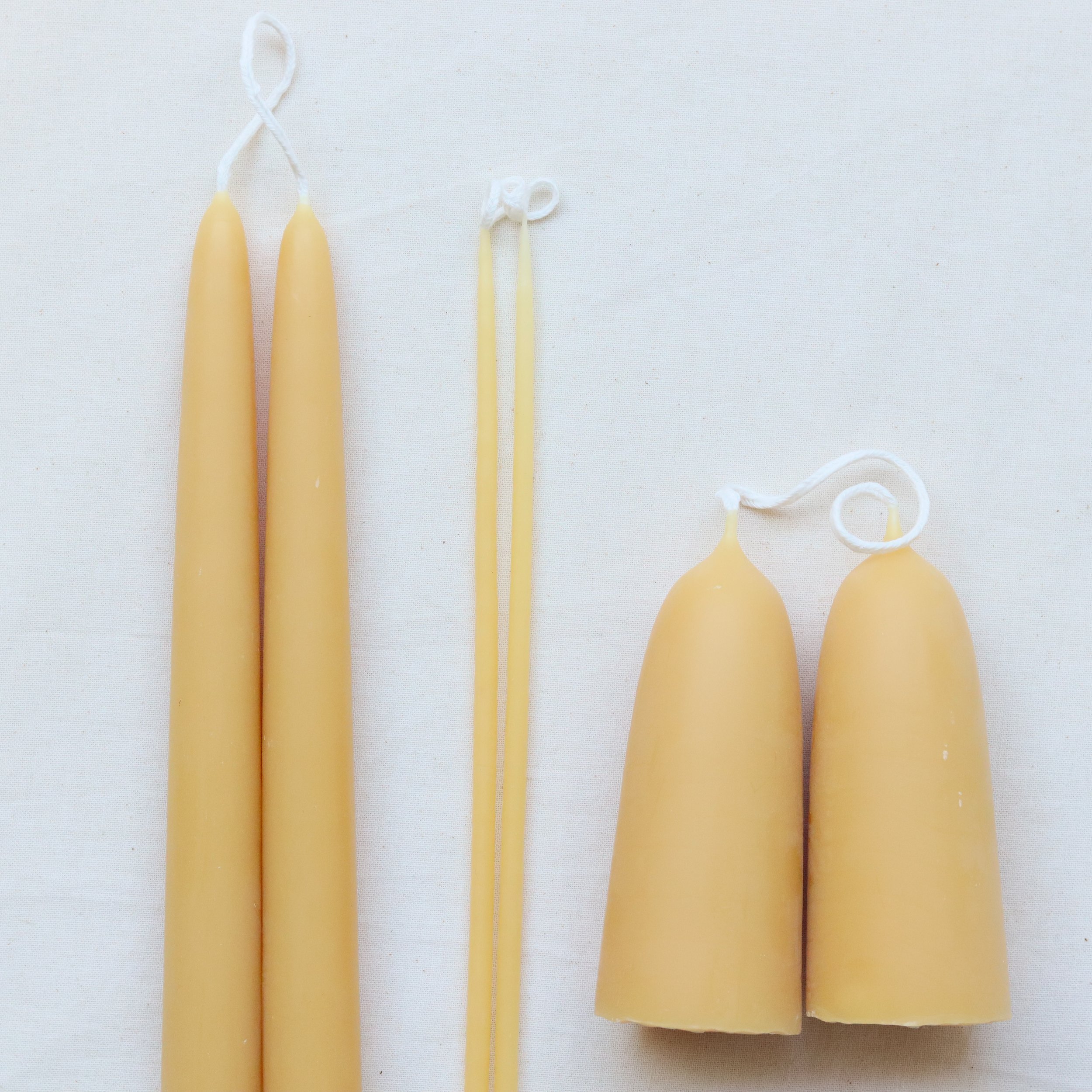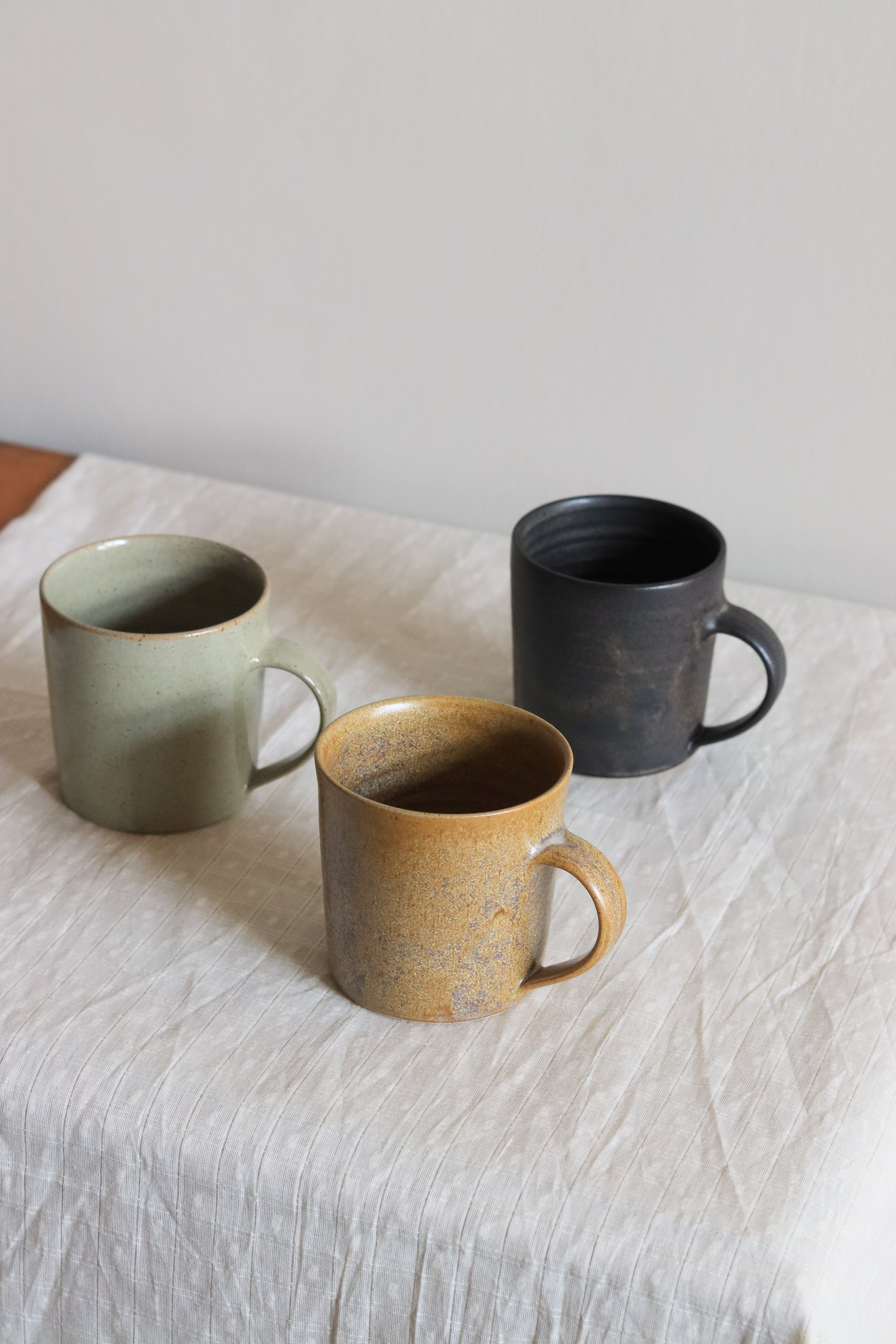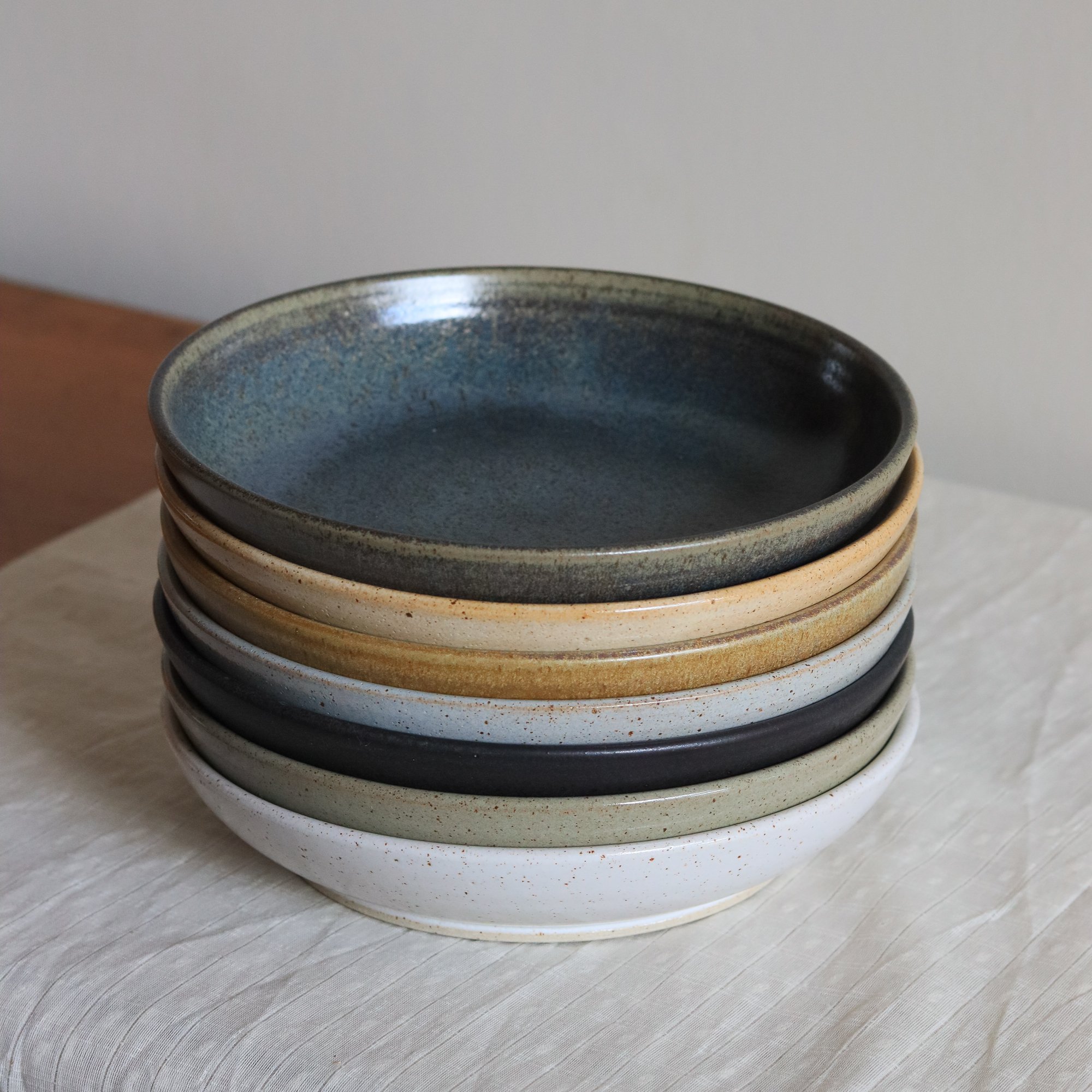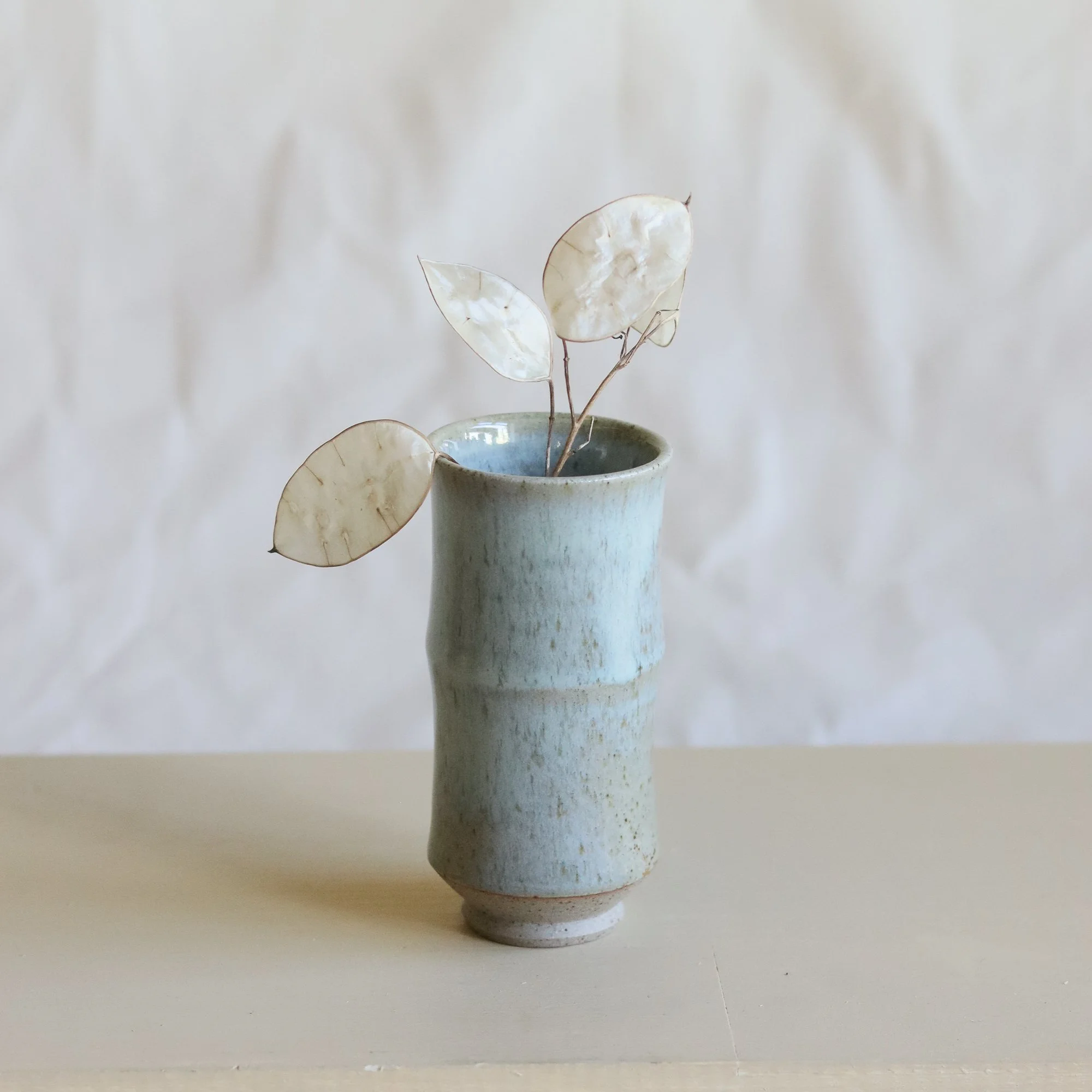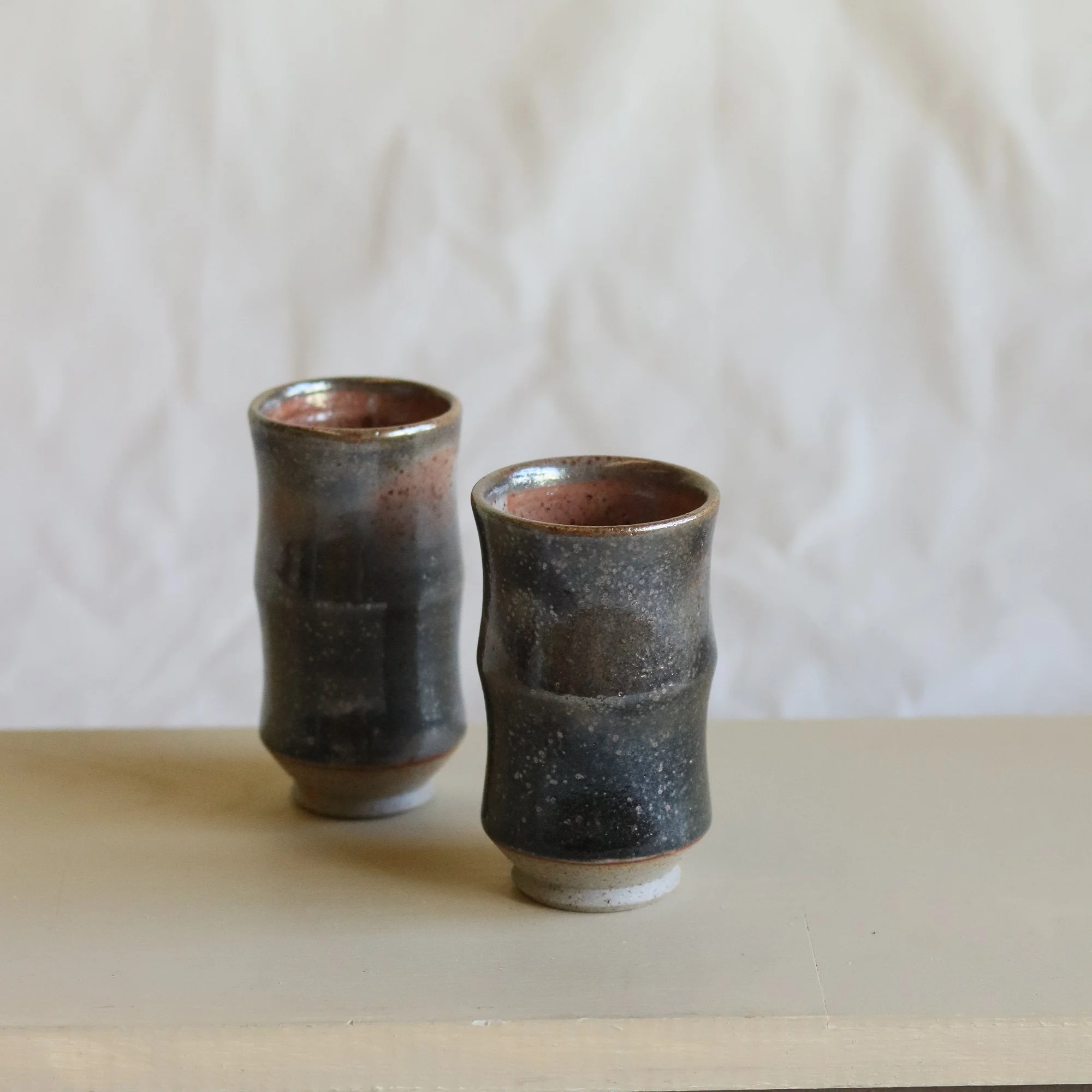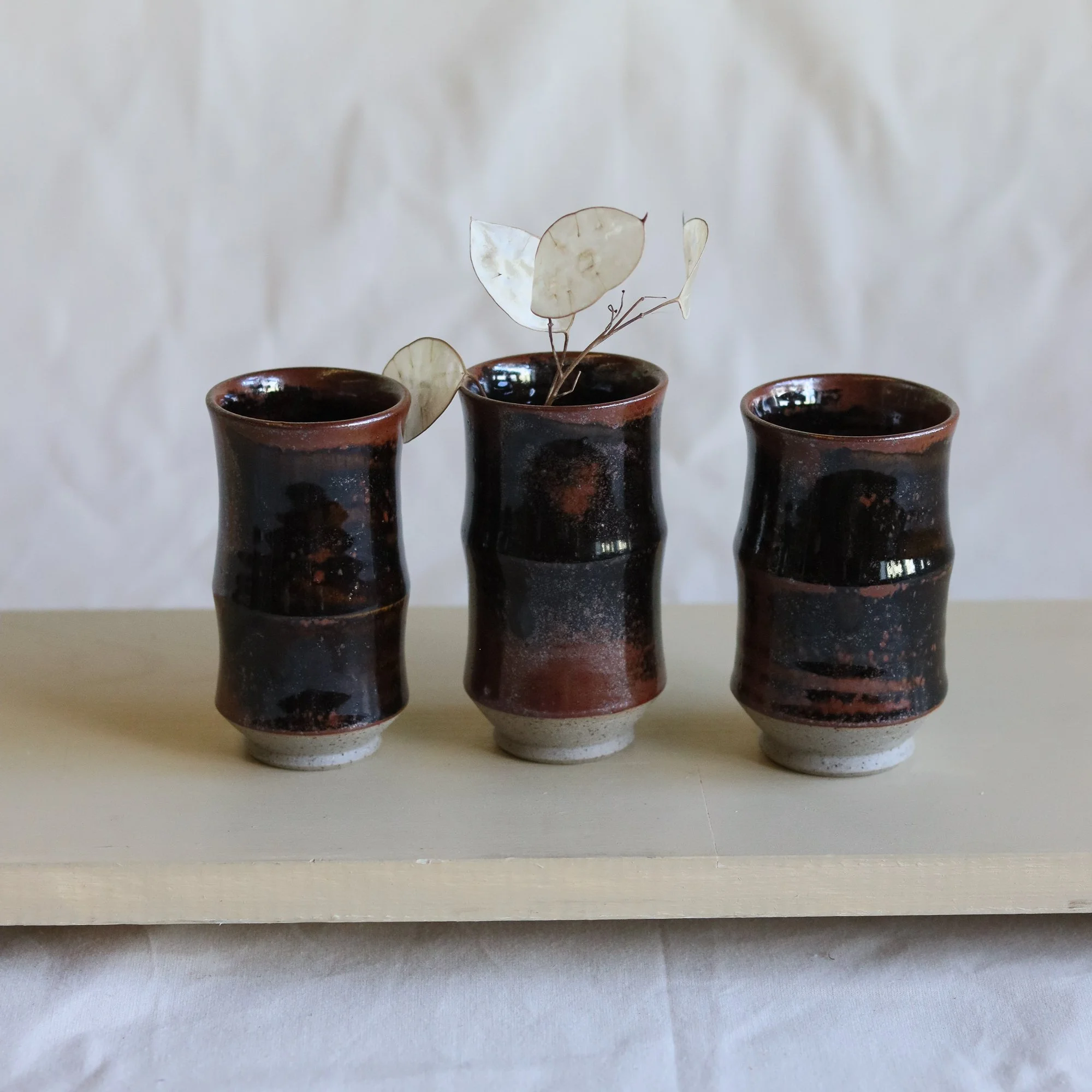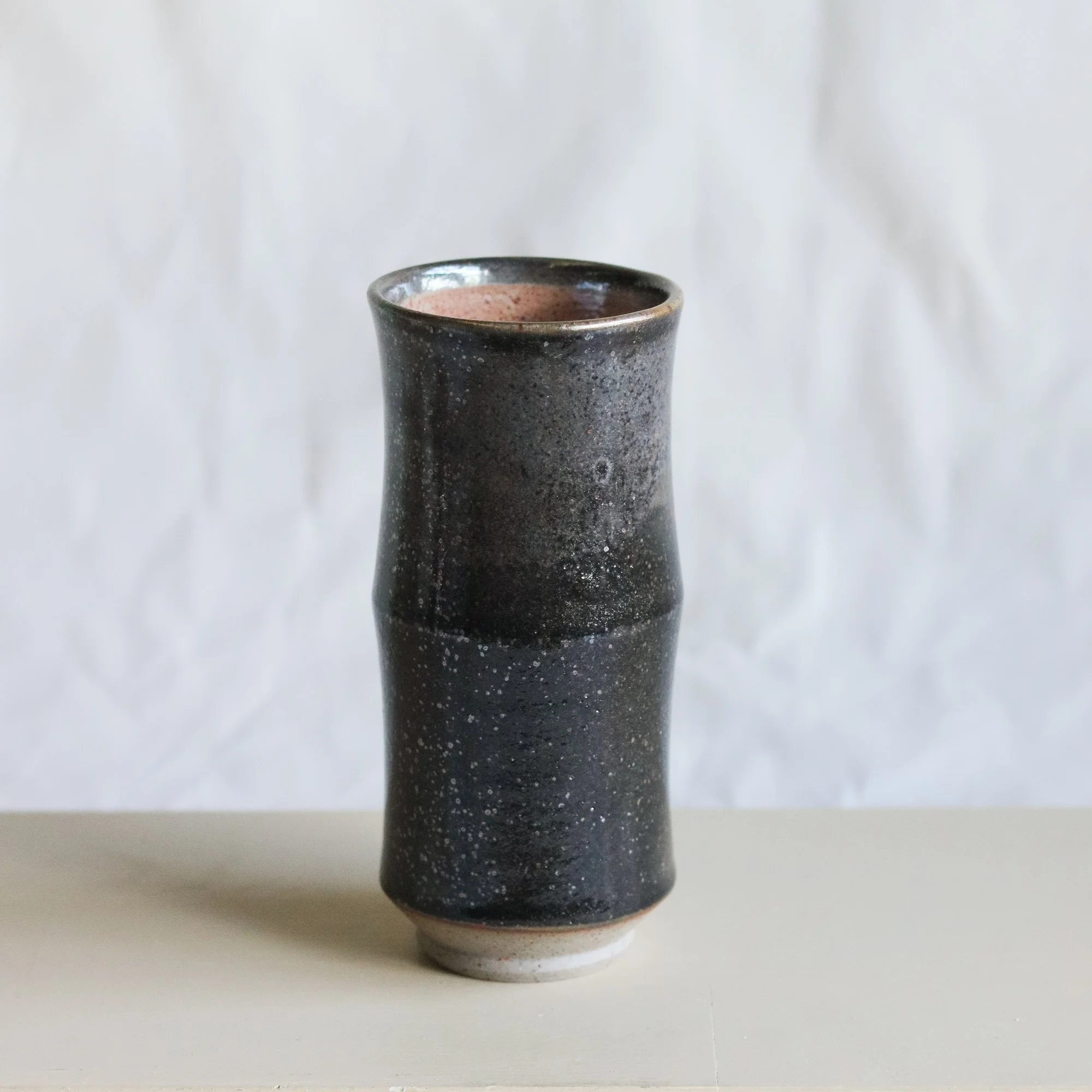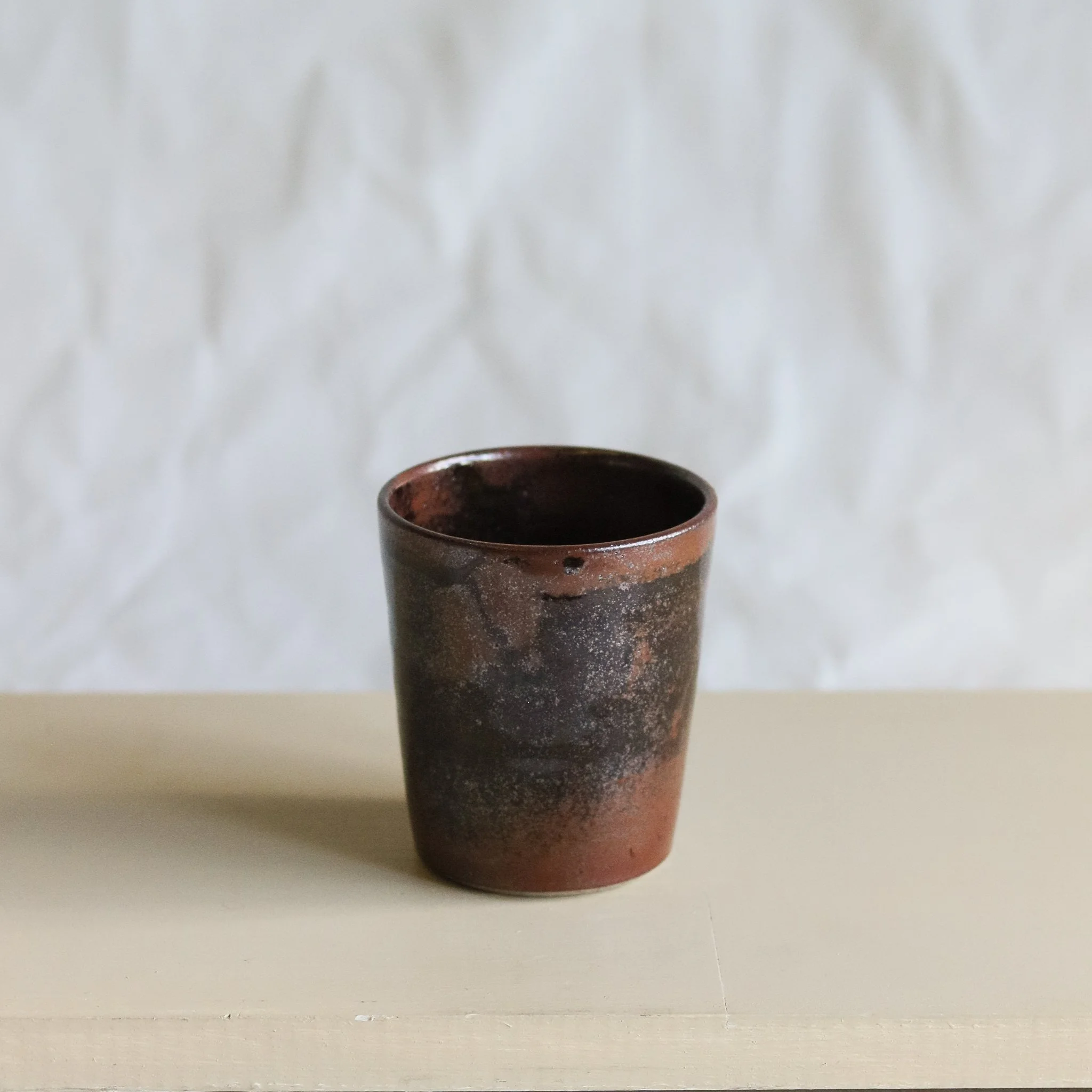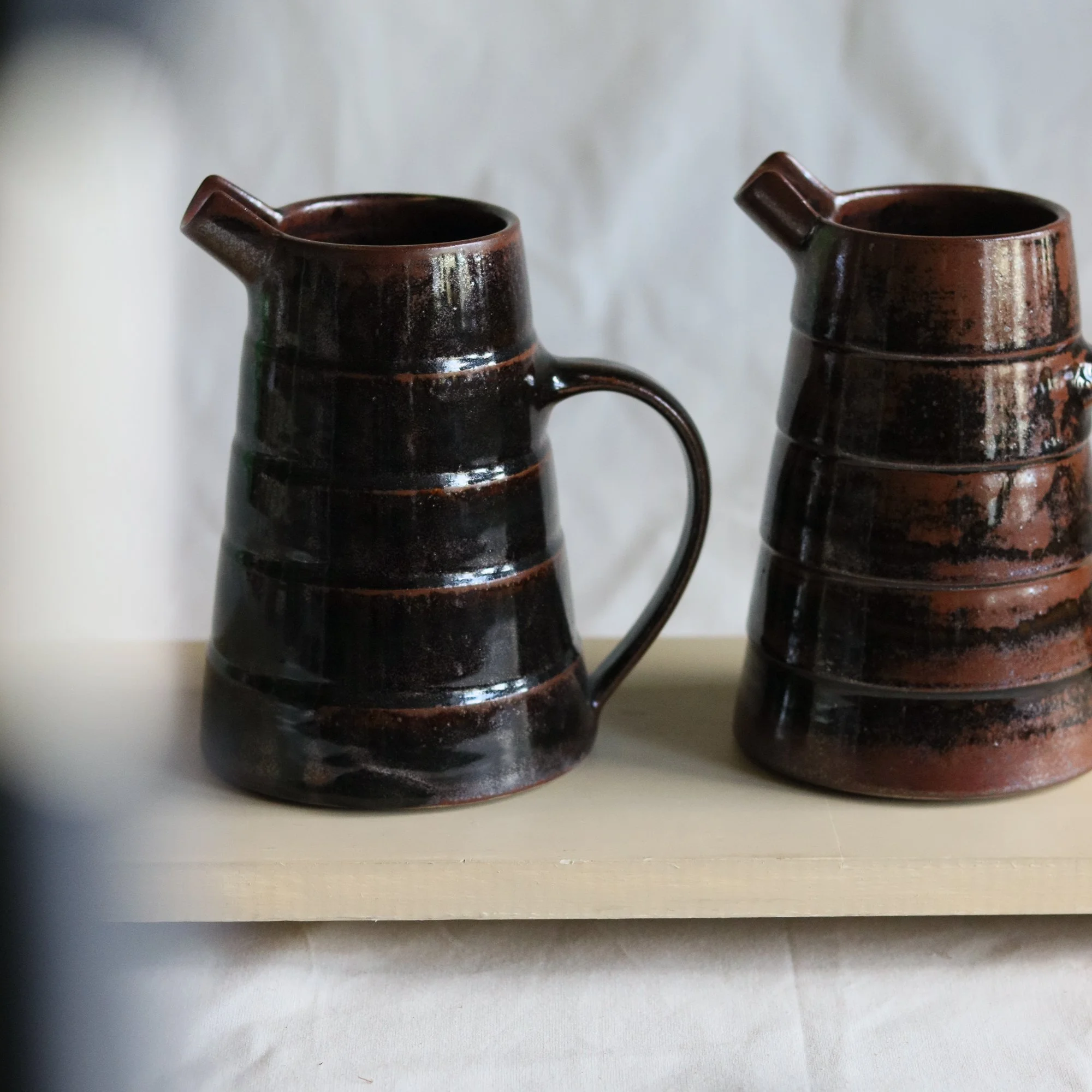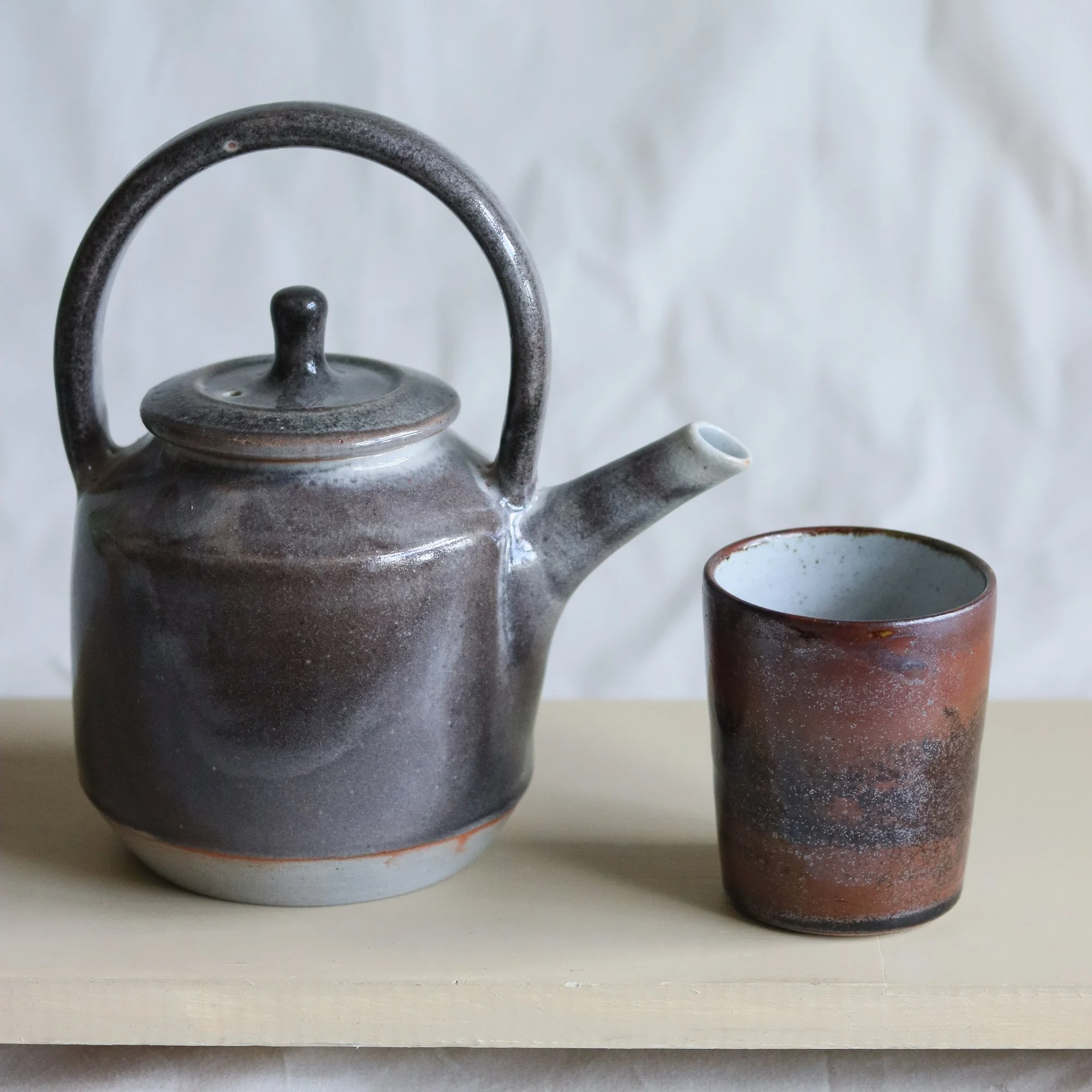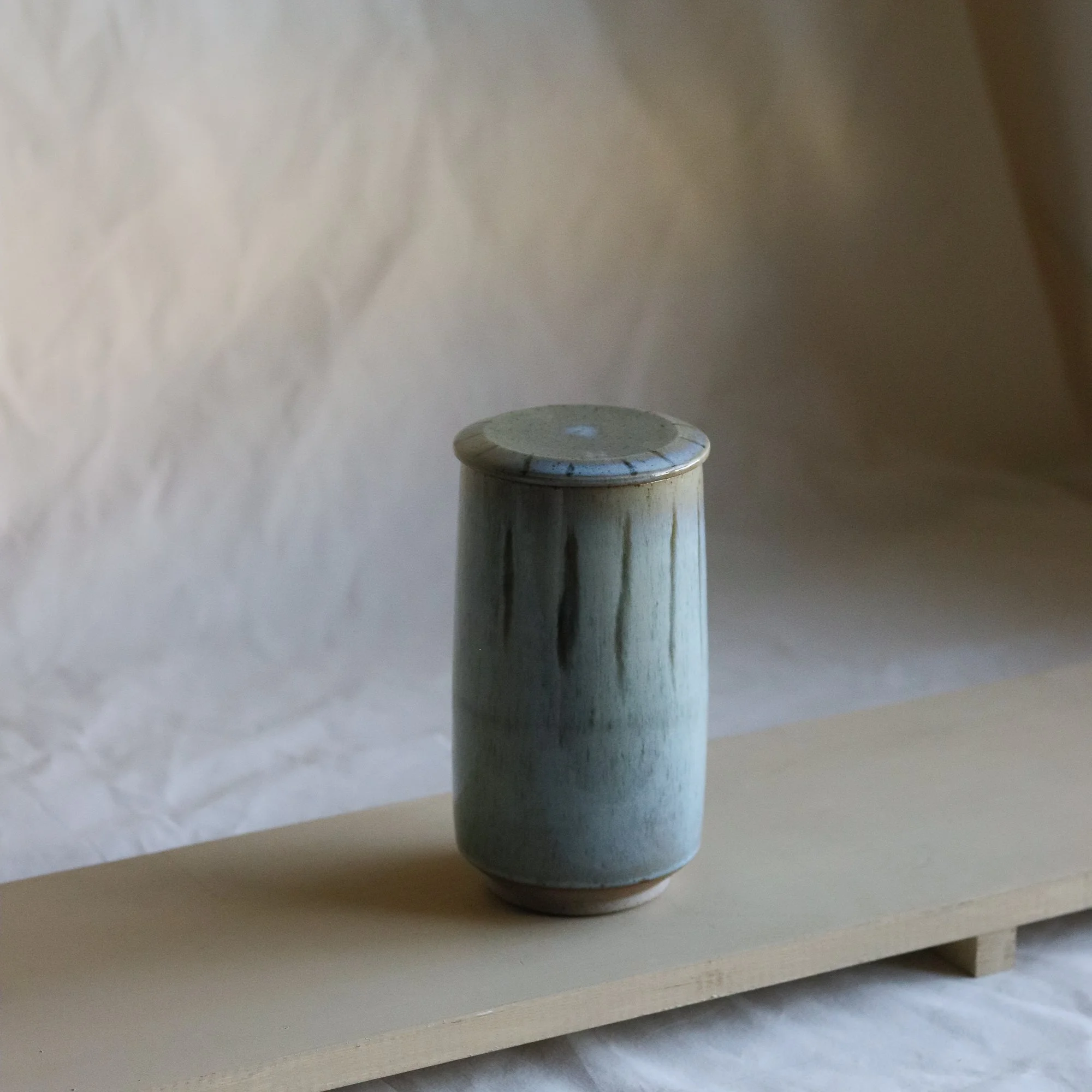Studio Journal - May
Glazed but not yet fired pieces - iron brushwork, celadons and chun glazes
May is the first month in our financial year and so there has been an element of introspection - analysing our finances from last year, our work and general life as a whole these past 12 months. We’re celebrating our 8th birthday as Pottery West which is quite an achievement. But even though we’ve been spinning that wheel, firing those kilns, making our livings doing this for almost a decade, it is surprising how much there is to learn. Nothing stays still.
At the moment we’re immersing ourselves in a new way of firing - reduction - using the new gas kilns at our studio building. It’s not only a new way of firing, it’s new glazes and we’ve decided to produce more one -off pieces for these firings too. I’m excited, happy and intrigued by the pieces from our early May firing and I think our next task is to find our identity in this body of work. This takes time - years - it’s something we’re constantly tweaking and developing with our standard ware and I think it’s fine to acknowledge and accept that we won’t get there all at once.
These faceted beakers were some of my favourite from the May firing and so we quickly got to work throwing some more for the June firing. The glaze is a pale blue Chun (formula from an old CR magazine, developed originally by Derek Emms). For our next reduction firing, which is at the beginning of June, I’ve tweaked this formula to try and improve the flux ratio and reduced the amount of calcium borate frit as I think it was excessive, (and also very expensive).
A freshly trimmed board of faceted beakers
Faceted beaker in a pale blue chub with iron brushwork
I’ve also been exploring shino glazes in reduction. The image below shows pieces in all same shino type glaze but fired in different parts of the kiln and applied in different thicknesses. Interestingly the thickness and colour doesn’t strictly correspond, so I think in this particular instance much of the difference in colour is to do with position in the kiln and carbon trapping. But you can see on the little orange pot where the glaze is thicker it is white - this is classic shino.
Shino glaze tests May 2023
So what is a shino glaze? I always like to start with words and so I was wondering about the etymology of the word ‘shino’. I can’t find a definitive source but a quick google and wikipedia has led me to believe that the word ‘shino’ may be derived from another word ‘Shiro” (meaning white). I don’t know, but one thing for sure is that a shino is a traditional Japanese glaze and today there are so many variations, so any shino glaze I work with I will refer to as ‘shino-type’ as it will undoubtedly be a variation of an original concept. Many of us recognise the distinctive qualities of shino as being white to orange in colour, sometimes with carbon trapping and often pinholing, crazing and crawling. These are normally defects in a glaze but this is a special effect glaze and I’m told we must embrace its drama and particularity (which believe me I am so happy to as I find so much beauty in these ‘defects’. Having said that I’ve been working with a variation of a shino I found on glazy and have tweaked a little to create a glossier finish which I hope won’t be so prone to crawling and pinholing. My first tests seem to have worked.
Original shinos were a mix of 70-80% alumina and sodium feldspar plus 20-30% clay. Most shinos have a very high percentage of neph sye and clay which means that it as very high levels of Al2O3 (usually over 1 but mine is only 0.96 which is still very high for a glaze). There is no added silica and low amounts of calcium as this inhibits the colour apparently. Soda ash is often used and this is soluble - it helps with carbon trapping if this is an effect you want. Some shinos include tin oxide (mine doesn’t). Apparently this helps develop the colour but I’m not 100% sure.. A material I’ve never used before is included - spodumene This is a source of lithium and this helps get an early melt and ‘seals’ the surface. It is my understanding that this should help to reduce crazing too. On my test tiles there is a small amount of crazing but no crazing with the vessels. For these tests we started with a fairly early reduction at 850-900 degrees celsius and we opted for a heavy reduction. I think this, coupled with the lower than usual levels of Al2O3 has meant that some carbon was trapped beneath the surface of the glaze creating the beautiful blue / grey colour. I love this! In the next firing I hope it will happen again but we shall see…..
Here is the shino formula I’ve been working to:
Sodium Feldspar 30
Hyplas Ball Clay 25
Spodumene 25
Nepheline Syenite 8
Soda Ash 7
Kaolin grolleg 5
This month we headed up to beautiful and surprisingly sunny Edinburgh for the Endless Love Creative craft market at the Fruitmarket. It was a fun few days for me and Matt, sans kids, and we coupled the fair with seeing friends and family. It was nice to meet a couple of existing customers in person and also to pop into our stockist, Edinburgh Mercantile, who have a very beautiful and tempting shop.
Production in the studio has been centred around a couple of large tableware orders, packing and shipping some wholesale pieces (which can take a while!), and also throwing pieces for our gas firing on the 2nd June. We wanted to do another firing before Bovey Tracey next month and the Hepworth Ceramics Fair but a clash in the schedule meant that the small kiln is unavailable and so we’ve opted to fire the larger 60 cubic ft. gas kiln. We’ll be firing alongside fellow potter Carla Murdoch. The size of the kiln is daunting, also because we haven’t fired this particular kiln yet it does feel risky. But if we keep your heads and follow the plan I think it should all work out fine. In any case, wish us luck!
Greenware bowls being made for the June gas firing









